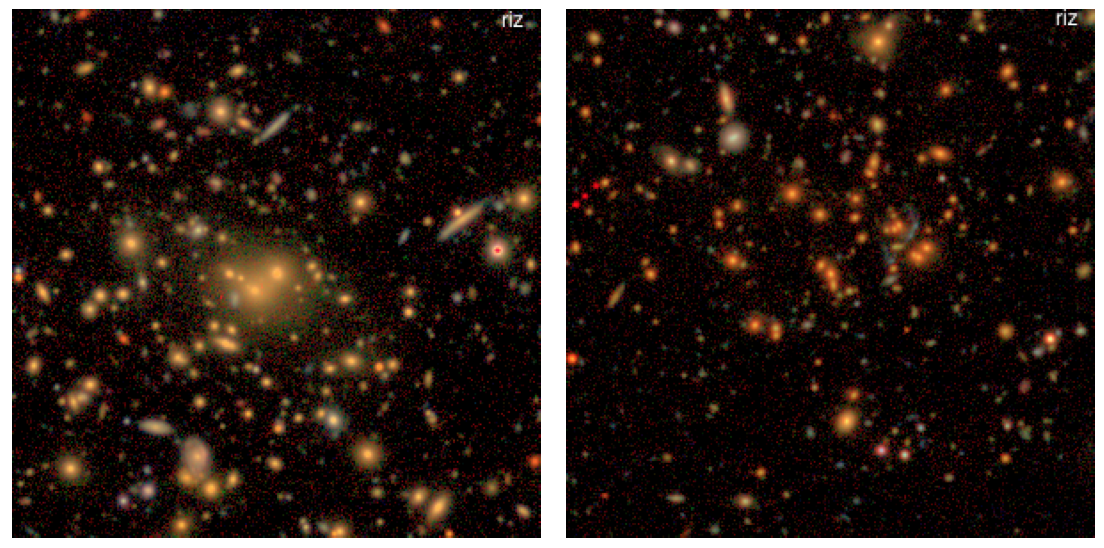Galaxy Clusters across the Cosmic Time
Galaxy clusters are unique laboratories for astrophysics and cosmology. They represent the most massive collapsed objects in the universe, containing hundreds to thousands of galaxies, and incredible amount of hot gas and dark matter. As such, their abundance is a sensitive probe of the nature of dark matter and dark energy, and the properties of cluster galaxy population can be used to study the environmental effects on galaxies.
With the HSC survey, we are in a unique position to study galaxy clusters in an unprecedented fashion, both in terms of sample construction and sample size.
- The combination of depth and filter set in the Wide layer allows us to detect clusters out to redshift~1.4 or so, so we could find the most distant and massive, thus rarest clusters among the imaging surveys in this decade.
- In many aspects of cluster studies, cluster mass is a key quantity in the analysis. The superb imaging quality delivered by HSC will allow us to measure the cluster mass via weak and strong gravitational lensing to z~1.
- The HSC survey will be able to deliver the first, large sample of mass selected cluster sample, that is, clusters detected solely by their total mass.
- In the Deep and Ultradeep layers, the available narrow band filters provide special windows to detecting clusters at several redshifts in the z=1-2 range, over large cosmic volumes. This range in redshift is critical for understanding the star formation and assembly histories of massive galaxies in clusters we see today.
- Using the Lyman break and narrow band filter selection techniques, we will detect clusters at redshift>2, typically dubbed as proto-clusters, that is, clusters that are in the formation stage.
- By combining cluster/proto-cluster samples from all three layers, we could therefore comprehensively study the cluster formation and evolution, from their infancy towards old ages. This is one of the most unique aspects of the HSC survey.
In our Deep and Ultradeep fields, we have a rich set of ancillary data in the ultraviolet and near-infrared, which would enable to detect clusters at z>1.4 with the traditional photo-z selection. The greater depth of the data also allows us to probe deeper into the cluster mass function, so we could study the progenitors of typical clusters we see today.
The ACTpol team is conducting a large area cluster survey over our Wide fields using the Sunyaev-Zel’dovich effect (SZE). The cross correlation between the HSC and ACTpol cluster samples then provides an exciting way to study the gastrophysics of clusters. In addition to the SZE-selected cluster sample from ACTpol, there will be large cluster samples from the on-going Madcows (IR selected) and planned eROSITA (X-ray selected) surveys. We will be able to compare several different cluster selection methods out to high redshifts.
Finally, our team is also conducting X-ray studies of our cluster samples using XMM, which will significantly advance our understanding of intracluster gas.

Figure: riz composite images of two clusters detected in the HSC survey with the CAMIRA cluster finding algorithm of Oguri (2014). The one on the left is at z=0.47, while the one on the right is at z=0.81. (Image credit: Masamune Oguri, Robert Lupton and the HSC collaboration.)
